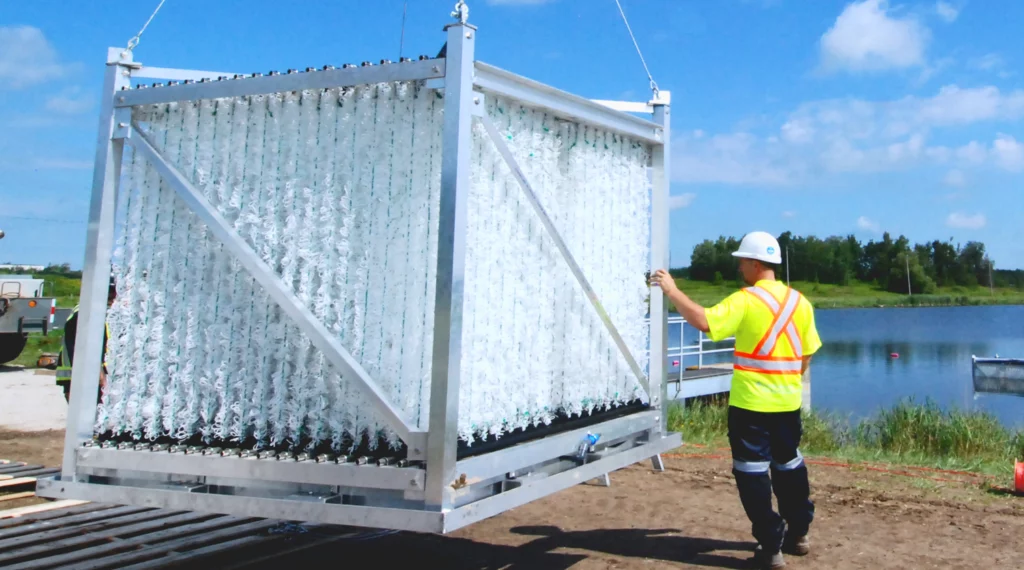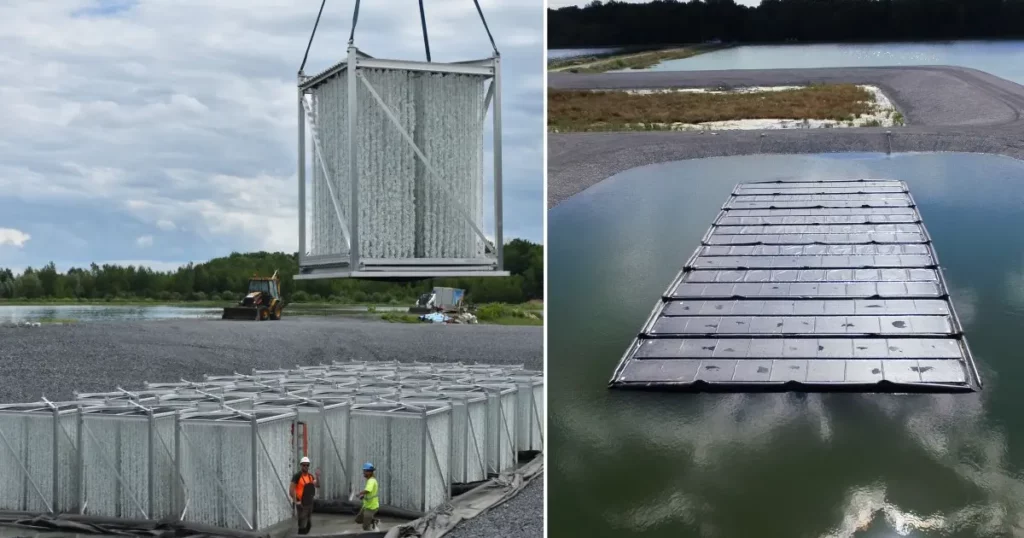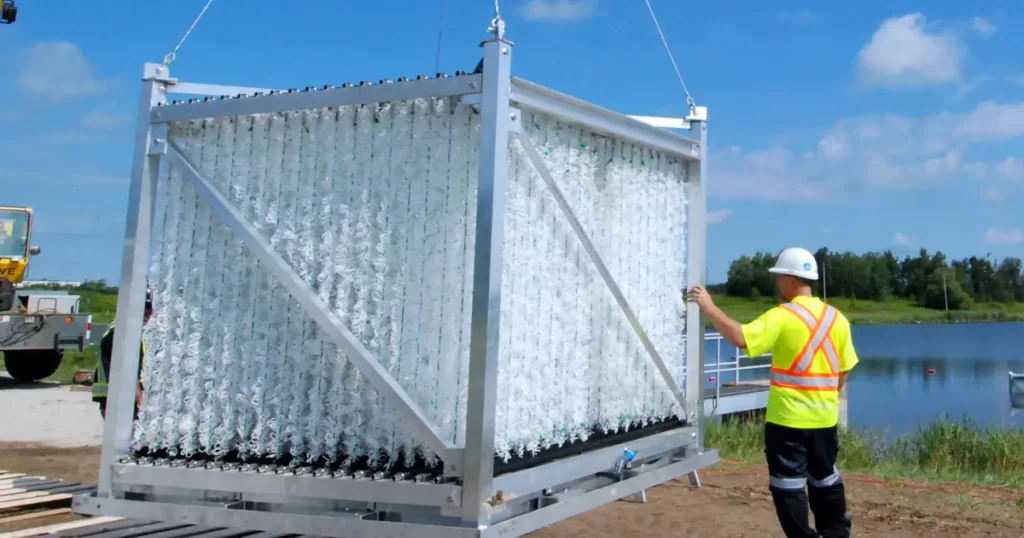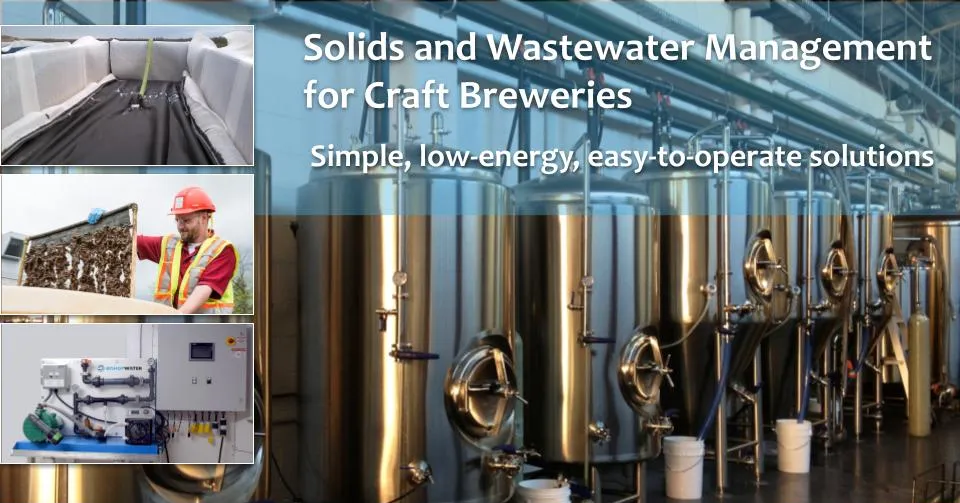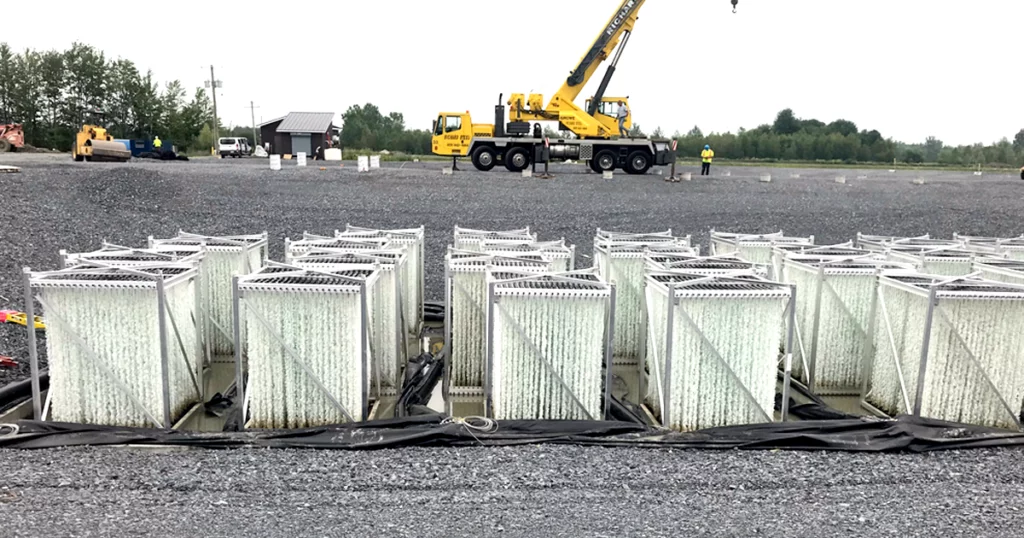
TECHNICAL PAPER
BioCord Reactors ammonia removal technology uses far less energy than MBBR
Aeration is the most energy-intensive process for a wastewater treatment plant, accounting for 50 to 80 percent of a facility’s total energy demand. That’s why our R&D efforts for BioCord® Reactors focus significantly on optimizing its fine-bubble aeration system and low-energy compressor technology to provide the best possible oxygen transfer and ammonia removal rates, while using less energy than MBBR.
We recently completed a research project that proves BioCord’s efficiency and dramatic advantages over alternative technologies that rely on coarse-bubble aeration, such as MBBR. The results show that BioCord Reactors can achieve 99% ammonia removal with only a small fraction of the air and energy compared to an MBBR alternative.
Why is BioCord so Efficient?
There are several reasons. First among them is that BioCord offers significantly more surface area. Second is that BioCord media is suspended from a frame and does not require high airflow from energy-intensive blowers to move and mix carriers. Even BioCord in cold weather applications is proven for ammonia removal. Read the full paper to learn more about the performance and advantages of BioCord Reactors.
We are grateful for the resources and support of Dr. Martha Dagnew and Lin Sun of the Department of Civil and Environmental Engineering at Western University.
Technical Paper
Biological treatment of municipal wastewater using fixed rope media technology: Impact of aeration scheme
This paper characterized a new fixed rope media system to upgrade decentralized and small-scale wastewater treatment plants. A primary effluent of municipal wastewater was treated using two pilot-scale reactors equipped with full-scale sized fixed rope media technology, one of the reactors was aerated using a coarse bubble tube and the other using a custom fine bubble aeration system. The study examined the impact of the aeration scheme and intensities and the COD/NH3-N ratio on ammonia and COD removal rates, excessive biofilm growth, slough-off, and microbial communities’ composition.


